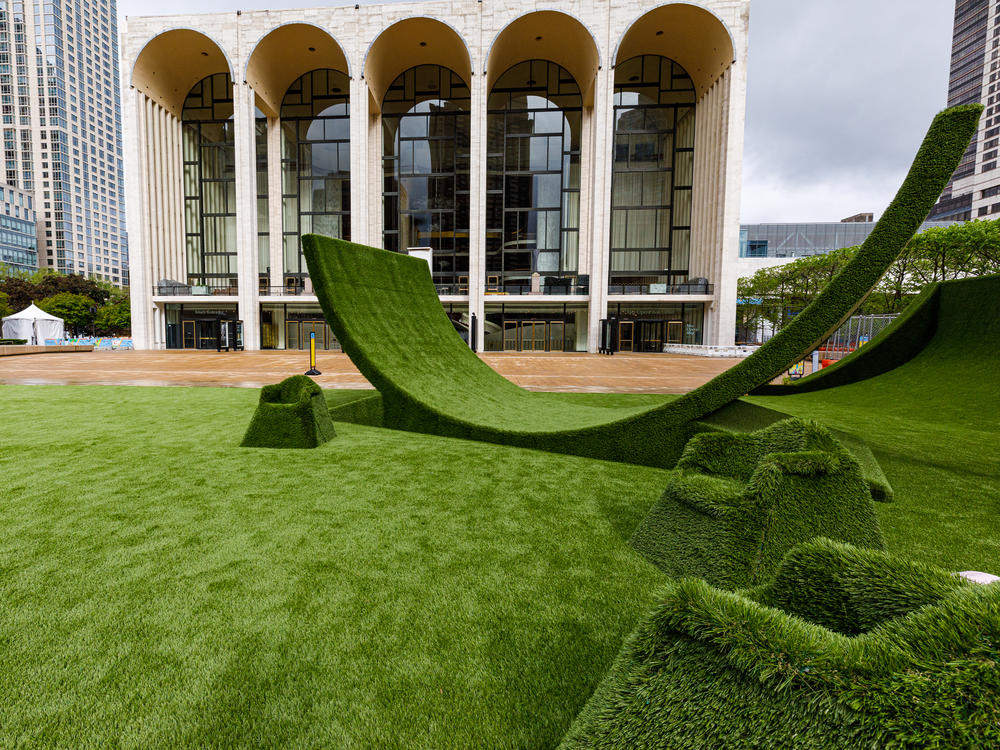Section Branding
Header Content
In New York City, A Juneteenth Event Examines The Meaning Of Freedom
Primary Content
The U.S. Congress this week established Juneteenth, a commemoration observed in communities and cities across the country for more than 150 years to mark the day slaves in Texas were informed of their freedom, as an officially recognized federal holiday. Celebrations being held all over the country on June 19 likely will assume an added sense of occasion. In one such event, happening at Lincoln Center in New York City, a starry group of Black artists will present an outdoor event that not only marks the day, but also examines the very idea of freedom itself.
Carl Hancock Rux, a poet, author, playwright, actor and musician, conceived and curated the event, called I Dream a Dream that Dreams Back at Me. He says he has complicated feelings about the holiday, traditionally celebrated with hot dogs, firecrackers and music.
"Juneteenth... it's like these enslaved people who shouldn't have been enslaved in the first place, and then they finally get the information that they're free," Rux explains. "And now, where do they go? There's no program set up for their freedom, there are no institutions that are set up for their freedom. There's no land, even though it's promised, given to these people for their freedom. There's no housing for them to go to. That is painful to me—I mean, that hurts."
Rux says he wanted to create an evening that takes the audience on a journey and asks: "How do we celebrate freedom? And how do we do more than just celebrate freedom, but actually question the notion of freedom?"
While there won't be firecrackers or hot dogs, there will be music. Among the many artists participating in the evening is pop icon Nona Hendryx, who is not only singing, but also writing music with Vernon Reid to lyrics by Pulitzer Prize-winning playwright Lynn Nottage. Hendryx will represent a welcoming spirit, standing in Lincoln Center's reflecting pool. The water is meant to evoke Harriet Tubman, who traveled back and forth 19 times to Cambridge, Maryland, through swampy water to take slaves to freedom.
"The water is not just the water that had to be crossed to get from the south to Canada," Hendryx says, "but the ocean that had to be crossed and survived. So, water is a very sacred thing. It's used in baptism, it's used in all of these things."
Singers Marcelle Lashley and Kimberly Nichole will join Hendryx in the water for this opening blues, rock and gospel incantation. They'll be wearing costumes made out of paper by visual artist Dianne Smith. Rux says the water and the paper are complementary natural elements and "it makes total sense that these women almost become like trees."
Then, the audience will move to another location, where Rux says they'll meet singer and performance artist Helga Davis towering above them, throwing confetti. She'll be singing both the "Star Spangled Banner" and "Lift Every Voice and Sing" – often called the Black National Anthem – and, according to Rux, "will in some ways combine them and deconstruct them, allow some words from one to bleed into the other, so that they become interchangeable in a way that makes us question whether or not freedom is everything we thought it should be."
Davis, Rux explains, represents the promised land. "But then, once you reach the promised land," he adds, "you have to question: Is it everything you hoped for? Is it everything you wanted? Is it everything you expected it to be? Do you have everything you need?"
The audience will then journey to its final destination, where they'll hear a set played by artist Toshi Reagon and her band, BIGLovely, performing folk, blues and gospel songs, including some from her soon-to-be-released album, Beautiful World. Reagon says she likes to read about Juneteenth every year—and she always finds the stories relevant.
"I found this story about one of the things they did was teach people how to vote," Reagon relates. "You know, they were like, 'You're free now. You need to know how to vote." And I just find that ironic in this era where... a lot of politicians and a lot of states are trying to take people's voting rights away."
Rux felt Reagon's activist background made her the perfect artist to end the evening. Her mother, Bernice Johnson Reagon, founded the iconic Black vocal group Sweet Honey in the Rock, and both of her parents were involved in the civil rights movement.
"Toshi Reagon represents a continuum, a conundrum," Rux says. "She represents a great Toni Morrison quote: 'I dream a dream that dreams back at me,' from that book, A Mercy. She represents lineage. She represents the human will to fight, to declare, to celebrate, to be outspoken and to make sure that everybody leaves with some kind of a revival of spirit."
Copyright 2021 NPR. To see more, visit https://www.npr.org.




